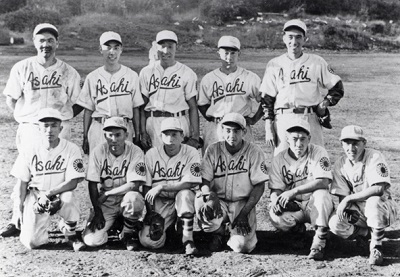Asahi Baseball Team National Historic Event

© Japanese Canadian National Museum / NNM 1996-180-002
The Asahi baseball team was designated a national historic event in 2008.
Historical importance: Asahi's athletic and sportsmanlike performances inspired both Japanese and Euro-Canadian spectators.
Commemorative plaque: 400 Powell Street, Vancouver, British Columbia Footnote 1
Asahi baseball team
Between 1914 and 1941, at a time when Japanese Canadians faced racism, Vancouver's Asahi Baseball Team thrilled fans by winning championships in senior amateur leagues. Its signature offensive strategy, "brain ball," emphasized bunting and speed on the bases, reflected the values of discipline and team work, and, coupled with a sparkling defence, levelled the playing field with more powerful opponents. The Asahi became a symbol of the Japanese-Canadian struggle for equality and respect, and despite being disbanded during the Second World War internment, left a legacy of inspiration for future generations.


The National Program of Historical Commemoration relies on the participation of Canadians in the identification of places, events and persons of national historic significance. Any member of the public can nominate a topic for consideration by the Historic Sites and Monuments Board of Canada.
- Date modified :